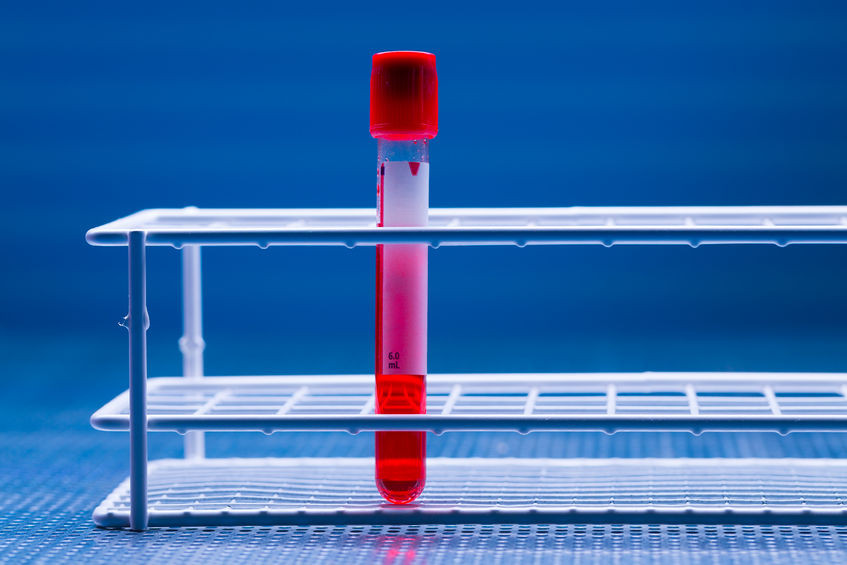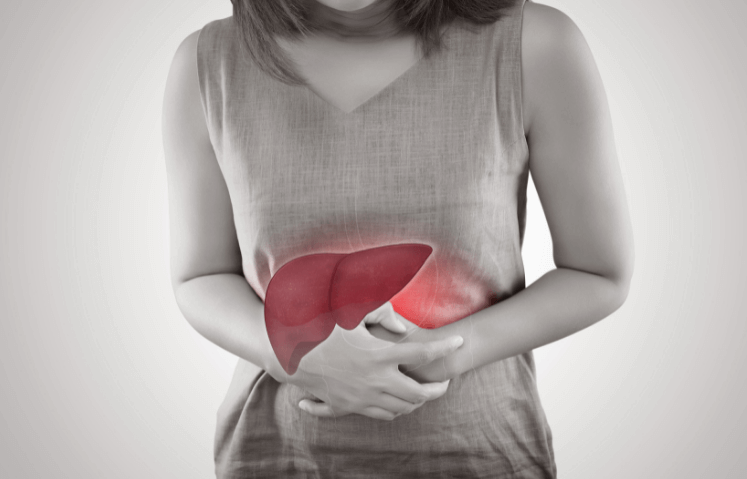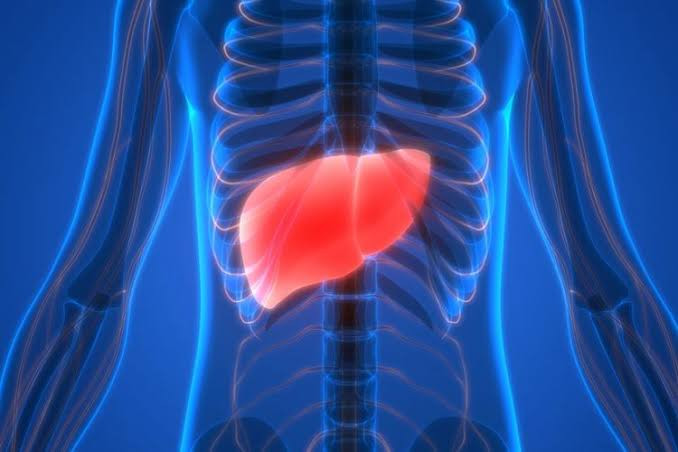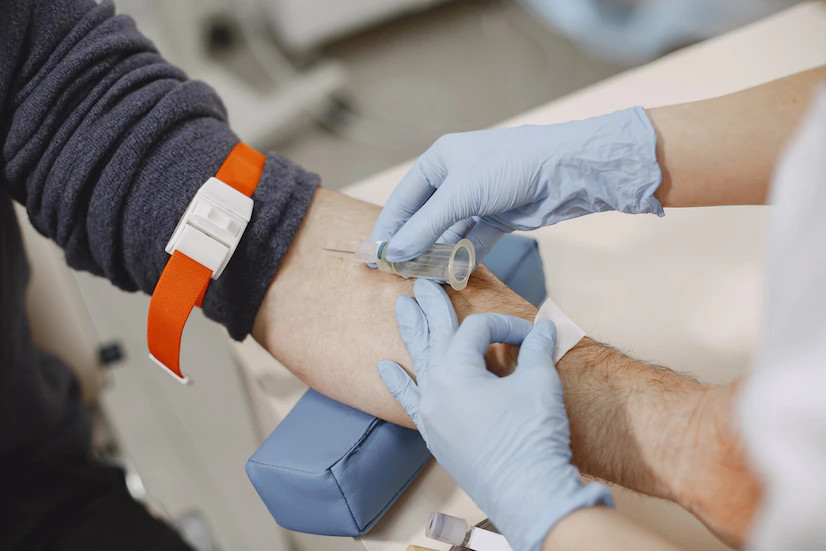Definition
The G6PD test is a blood test used to measure the levels of the enzyme Glucose 6 Phosphate Dehydrogenase (G6PD).
This enzyme is crucial for the maintenance of red blood cells. It helps in the formation and breakdown of red blood cells, playing a protective role by preventing the rupture of these cells, which would lead to the release of hemoglobin. The G6PD enzyme is also important for preventing cellular damage, particularly in red blood cells, caused by free radicals.
This test is primarily conducted to detect a deficiency in the G6PD enzyme, which can indicate certain health conditions.
Indication
The G6PD test is typically recommended for individuals exhibiting symptoms of G6PD deficiency and hemolytic anemia. Some common symptoms that may necessitate a G6PD test include:
-
Severe fatigue and weakness
-
Pale skin
-
Shortness of breath
-
Heart palpitations
-
Jaundice (yellowish skin and eyes)
-
Darker-colored urine
-
Abdominal and back pain
In newborns, a G6PD test is warranted if jaundice symptoms (such as dark urine, elevated bilirubin levels, pale stools) persist for more than two weeks or cannot be explained by other conditions. A G6PD test is also recommended for babies with a family history of G6PD deficiency.
Contraindication
There are no specific contraindications associated with the G6PD test.
Preparation Before the Test
The G6PD test does not require any special preparation, but certain medications must be avoided prior to the test. Some drugs, such as sulfa medications commonly used in antibacterial, antifungal, anti-nausea, and diuretic treatments, can affect the results of the test. Therefore, it is essential to inform your doctor about any medications you are currently taking.
Test Procedure
The procedure for the G6PD test is straightforward. The laboratory technician will first clean the area of your arm with sterile alcohol. Then, they will collect a small sample of blood from a vein in your arm using a sterile syringe. For infants, blood is typically drawn from the heel. After collection, the blood is placed into a test tube and analyzed using specialized equipment. The procedure is quick, taking only about 5 minutes, and you can resume your regular activities immediately afterward.
The risk associated with this blood test is minimal. Some individuals may experience mild discomfort, dizziness, or bruising at the site of blood collection, but these symptoms typically subside quickly.
Normal and Abnormal Values
The normal range for G6PD levels in adults is between 5.5 and 20.5 units per gram of hemoglobin.
Abnormal values suggest a G6PD deficiency, which is categorized into two levels:
-
Moderate G6PD Deficiency: G6PD levels are around 10% to 60% of the normal range.
-
Severe G6PD Deficiency: G6PD levels are less than 10% of the normal range.
Results and Recommendations (Follow-up Tests)
Low G6PD Levels
If the G6PD test result shows low enzyme levels, it indicates a deficiency in G6PD. The severity of this deficiency can be categorized into moderate or severe levels based on the percentage of G6PD in the blood.
-
In cases of moderate G6PD deficiency, this typically points to hemolytic anemia, or it could be related to ongoing treatment or the presence of an infection.
-
A severe G6PD deficiency may also point to hemolytic anemia.
G6PD deficiency is more commonly observed in men than in women. However, some women with slightly lower G6PD levels may not show symptoms of the deficiency. This could suggest that they are carriers of the genetic condition, which can be passed down to their children.
Although G6PD deficiency usually does not cause symptoms, managing the condition is essential by avoiding triggers. Taking preventive measures can help stop the development of hemolytic anemia. Specific substances and medications that should be avoided include aspirin, acetaminophen (paracetamol), certain antibiotics, malaria medications, and chickpeas. Chickpeas, in particular, contain a substance that, when metabolized, can produce free radicals, which in turn may trigger hemolytic anemia in people with G6PD deficiency. This condition is referred to as favism.
Normal
If the G6PD test result falls within the normal range, it indicates that the body has adequate levels of the enzyme. To maintain good health, it is advisable to eat a balanced diet, engage in regular physical activity, and have periodic health check-ups.
Consult the Right Doctor
If your G6PD test results are abnormal, it is important to consult a general practitioner to receive a proper diagnosis and treatment. If necessary, you may also seek advice from an internist for further evaluation. For pediatric patients, a pediatrician can offer more specialized care and information about the condition.
If you experience symptoms of severe hemolytic anemia that interfere with daily activities and last longer than 24 to 48 hours, seek medical attention immediately.
Looking for more information about laboratory, radiology, and other examination results? Click here!
- dr Ayu Munawaroh, MKK
G6PD Test. (2022). Retrieved 15 August 2022, from https://my.clevelandclinic.org/health/diagnostics/
G6PD Test. (2022). Retrieved 15 August 2022, from https://medlineplus.gov/lab-tests/g6pd-test/
What is the G6PD Test?. (2021). Retrieved 15 August 2022, from https://www.webmd.com/a-to-z-guides/what-is-g6pd-test
Glucose-6-Phosphate Dehydrogenase. (2022). Retrieved 15 August 2022, from https://www.urmc.rochester.edu/encyclopedia/content.aspx?contenttypeid=167&contentid=g6pd











